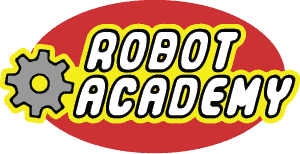LEGO Robotics is a powerful educational tool for improving students’ academic outcomes across a wide range of subjects. Robot Academy’s hands-on activities enable students to feel a sense of profound accomplishment within the context of STEM problem-solving at an early age, thus bolstering students’ confidence and improving their academic performance not just in STEM-related subjects but also more generally. We’ve graduated thousands of students from our programs, and we hear more-or-less the same story from countless parents and teachers: “my student was struggling, they loved working with the LEGO robots, and now they’re happier and more confident at school.”
Why is LEGO robotics such an important tool for improving students’ academic performance? A review of the relevant academic literature explains the success we’ve had with our programs and provides a framework for how schools should proceed in implementing LEGO robotics in the classroom.
A recent brief published by the Community for Advancing Discovery Research in Education and funded by the National Science Foundation (Sarama et al., 2018) laid out a science-informed rational for investing in STEM education specifically for PreK through Grade 3, stating that it promotes “curiosity, critical thinking, communication, collaboration, persistence, problem-solving, and positive attitudes toward science and mathematics…” and that “…these improvements carry over into subsequent grades, and in mathematics, they can predict later achievement.”
These claims are supported by a growing body of evidence in the literature surrounding STEM education. Kurt, M., & Benzer, S. (2020), for example, found that groups of 6th graders who participated in hands-on STEM learning scored higher on academic achievement tests than students who participated in conventional learning programs instead. Çayci & Örnek (2019) found a similar result among 4th grade students who were exposed to a STEM-based learning program involving electronic circuits. The students who participated in the STEM activities scored significantly higher on a test of generalized academic success than the students who did not.
Why does participation in hands-on STEM activities bolster academic performance, even in seemingly unrelated subjects? Our belief, which is supported not only by an extensive body of research but also by our 15 years of experience working with students and observing their profound growth as individuals as a result of participating in our programs, is that the key variable is students’ confidence. Students who acquire and sustain a sense of confidence early in life are more likely to take on new challenges and to apply themselves diligently across a variety of subjects. Stankov et al. (2012) support this theory by demonstrating that confidence was a better predictor of students’ eventual achievement in mathematics as well as in English than were several other commonly studied metrics, including self-efficacy, self-concept, and anxiety.
At Robot Academy, we’ve learned to optimize for this critical variable of students’ confidence by creating learning experiences that allow students to experience a sense of success and mastery. Our activities provide students with quick victories at the outset as well as harder-earned victories for students who apply themselves diligently. This allows us to ensure the success of each student in a diverse population. The use of LEGO robotics is crucial to this formula, because LEGO is familiar to most students and is associated with fun and creativity (Moreau & Engeset, 2016).
LEGO Robotics in particular as a system for creating hands-on STEM experiences for students has been clearly shown to promote positive outcomes across a variety of populations and for a variety of age groups (Rockland et al., 2010). Researchers describe the positive learning outcomes achieved using LEGO robotics to demonstrate concepts within mathematics (Martínez Ortiz, 2015), the life sciences (Whittier & Robinson, 2007), and of course engineering (Kaloti-Hallak et al., 2019).
However, it should be noted that the presence of LEGO robotics in the classroom does not automatically guarantee favorable outcomes. Castledine & Chalmers (2011) studied a group of 6th grade students who used LEGO robotics in the classroom and found that “while LEGO robotics can be considered useful problem solving tools in the classroom, careful teacher scaffolding needs to be implemented in regards to correlating LEGO with authentic problem solving.” This is consistent with our opinion that LEGO robotics should be introduced to students within the context of a robust, evidence-based curriculum rather than in a haphazard manner. Robot Academy’s LEGO robotics curriculum provides teachers with a series of hands-on activities, each of which is clearly linked to a real-world application as well as to an authentic engineering design process.
References
Castledine, A.-R., & Chalmers, C. (2011). LEGO Robotics: An Authentic Problem Solving Tool? Design and Technology Education, 16(3), 19–27.
Çayci, B., & Örnek, G. T. (2019). Effect of STEM-Based Activities Conducted in Science Classes on Various Variables. Asian Journal of Education and Training, 5(1), 260–268.
Kaloti-Hallak, F., Armoni, M., & Ben-Ari, M. (2019). The Effect of Robotics Activities on Learning the Engineering Design Process. Informatics in Education, 18(1), 105–129.
Kurt, M., & Benzer, S. (2020). An Investigation on the Effect of STEM Practices on Sixth Grade Students’ Academic Achievement, Problem Solving Skills, and Attitudes towards STEM. Journal of Science Learning, 3(2), 79–88.
Martínez Ortiz, A. (2015). Examining Students’ Proportional Reasoning Strategy Levels as Evidence of the Impact of an Integrated LEGO Robotics and Mathematics Learning Experience. Journal of Technology Education, 26(2), 46–69.
MOREAU, C. P., & ENGESET, M. G. (2016). The Downstream Consequences of Problem-Solving Mindsets: How Playing with LEGO Influences Creativity. Journal of Marketing Research, 53(1), 18–30.
Rockland, R., Bloom, D. S., Carpinelli, J., Burr-Alexander, L., S.Hirsch, L., & Kimmel, H. (2010). Advancing the “E” in 12 STEM Education. The Journal of Technology Studies, 36(1), 53–64. JSTOR.
Sarama, J., Clements, D., Nielsen, N., Blanton, M., Romance, N., Hoover, M., Staudt, C., Baroody, A., McWayne, C., & McCulloch, C. (2018). Considerations for STEM Education from PreK through Grade 3. In Community for Advancing Discovery Research in Education (CADRE). Community for Advancing Discovery Research in Education (CADRE).
Stankov, L., Lee, J., Luo, W., & Hogan, D. J. (2012). Confidence: A better predictor of academic achievement than self-efficacy, self-concept and anxiety? Learning and Individual Differences, 22(6), 747–758.
Whittier, L. E., & Robinson, M. (2007). Teaching Evolution to Non-English Proficient Students by Using Lego Robotics. American Secondary Education, 35(3), 19–28. JSTOR.

